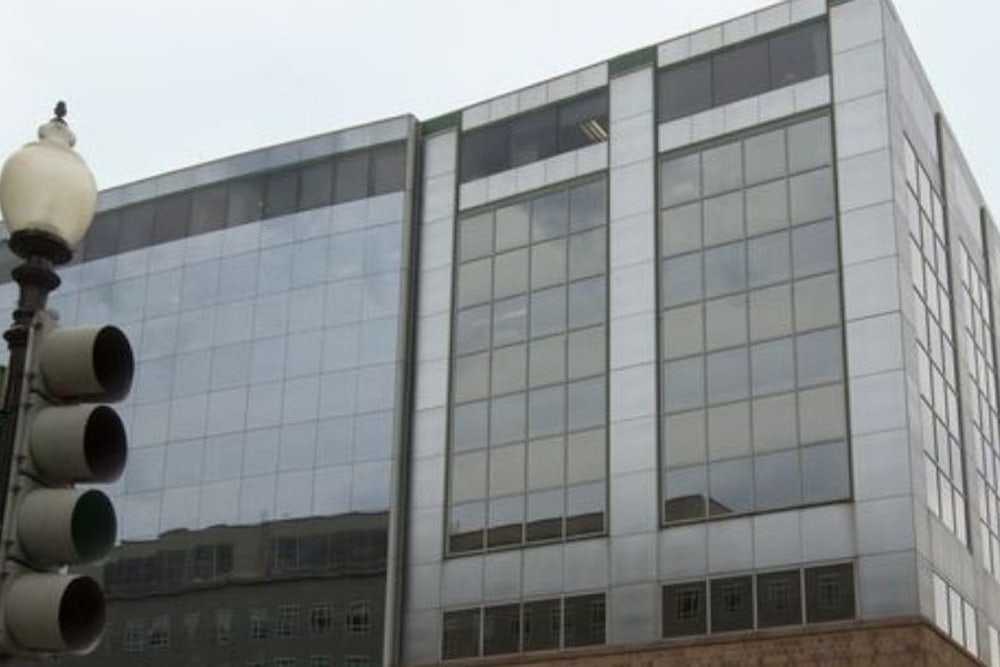On Tuesday, the Supreme Court will consider the challenge of Hobby Lobby, an Oklahoma City-based craft-store chain, to Obamacare’s contraception mandate—a case that could bolster the doctrine of corporate personhood that the Court laid out in Citizens United and end anti-discrimination laws as we know them. Just a few blocks away, the Hobby Lobby’s president, Steve Green, is looking to enshrine his religious beliefs in Washington, D.C. in a different way: with a museum devoted to the bible, for which he purchased a $50 million property in 2012.
The new attraction will house a collection of historic bibles that Green has been assembling since 2009. His holdings range from a hand-illustrated Martin Luther New Testament to a Torah from the Spanish Inquisition; experts have valued them at between $20 and $40 million. The as-yet-unnamed bible museum, which is slated to open in the spring of 2017, will sit at 3rd and D Streets in Southwest D.C., in an eight-story warehouse that Green plans to complement with a two-story addition. A report from the city’s Historic Preservation Review Board even compared the mock-ups to London’s Tate Modern. The museum’s goal, according to the mission statement in its 501(c)3 tax filings for 2011, the most recent year available, is “To bring to life the living word of God, to tell its compelling story of preservation, and to inspire confidence in the absolute authority and reliability of the bible.”
The museum plans to accomplish this largely through historic reenactments, or what its chief operating officer Cary Summers calls “immersive environments.” For example, one of the Green Collection’s travelling exhibitions—so far, they've been shown in Oklahoma City, Atlanta, Israel, Cuba, and the Vatican—displays a note written by Martin Luther the night before his excommunication in “a theater featuring a debate between Fathers Erasmus and Luther and Dr. Johann Eck … which culminates in Luther nailing his 95 Theses to his church door.” Tourists will also find set pieces of the Dead Sea, where the famous scrolls were found, and London’s Westminster Abbey, where the King James Bible was written.
Summers assured me that “we’re not trying to convince anybody of anything. We’re simply presenting the facts.” Summers added that consistency across thousands of international bibles “gives a great deal of comfort that the bible is true, and it’s accurate.”
When I asked Summers if the exhibits would contain any evidence that the bible was divinely written, he asked, “What if I was to ask you, did Shakespeare write Shakespeare?” I said the jury was out on the bard. “That’s true,” he said. “So somewhere along the way, people have to draw a line and say, ‘Everything I read, even though I can’t prove Aristotle was Aristotle or Sappho was Sappho’—people have a tendency to believe that they are.”
Along with snapshots from biblical historiography, the museum will recreate scenes from famous biblical stories, such as creation. But Summers said it won’t touch on their more controversial implications. Summers has also served as a consultant at the Creation Museum, where an exhibit shows Adam and Eve sharing the Garden with the dinosaurs. Green’s museum, by contrast, will reiterate the tale of earth’s first seven days without mentioning evolution. “How people interpret it is up to them—we’re not going there,” said Summers. “If others want to create a museum that takes the other approach, that’s up to them.” Of course, others have, at the National Museum of Natural History a few blocks away.
Summers said the museum won’t mention homosexuality, abortion, or any other “political commentary.” (He also declined to comment on the Supreme Court case.) But he hinted that the museum will weigh in more freely on controversies past. He mentioned anthropological exhibitions on the spread of the bible: How it “enters into countries and very uncivilized tribes and cultural settings that are very cruel. The bible entered into it and their lives were changed. … We’re presenting the impact through the facts.”
These anthropological components, along with exhibits on archeological records that corroborate biblical stories, are in early planning stages. In the meantime, the Green Collection continues touring—it’s en route to the Vatican this week—while the architects work on its eventual home. Religion News Service has reported that Green paid $50 million for the former refrigeration warehouse, which is currently occupied by the Washington Design Center. Tax filings value its artifacts at $23,038,000.
As Green’s landmark lawsuit comes before the Court, his collection continues to make the rounds, embedded in history as he sees it. Workers who depend on a paycheck and health care from his company, or another with a religious owner, may soon be highly acquainted with his point of view. Visiting his museum, on the other hand, is voluntary.
Correction: A previous version of this article referred to the museum as the Museum of the Bible; that is the name of the non-profit organization, but the museum has not been named. The article also misstated the year Steve Green began collecting bibles; the number of traveling exhibitions displaying his collection; and the cost of the museum, which will be over $70 million. We regret the errors.
